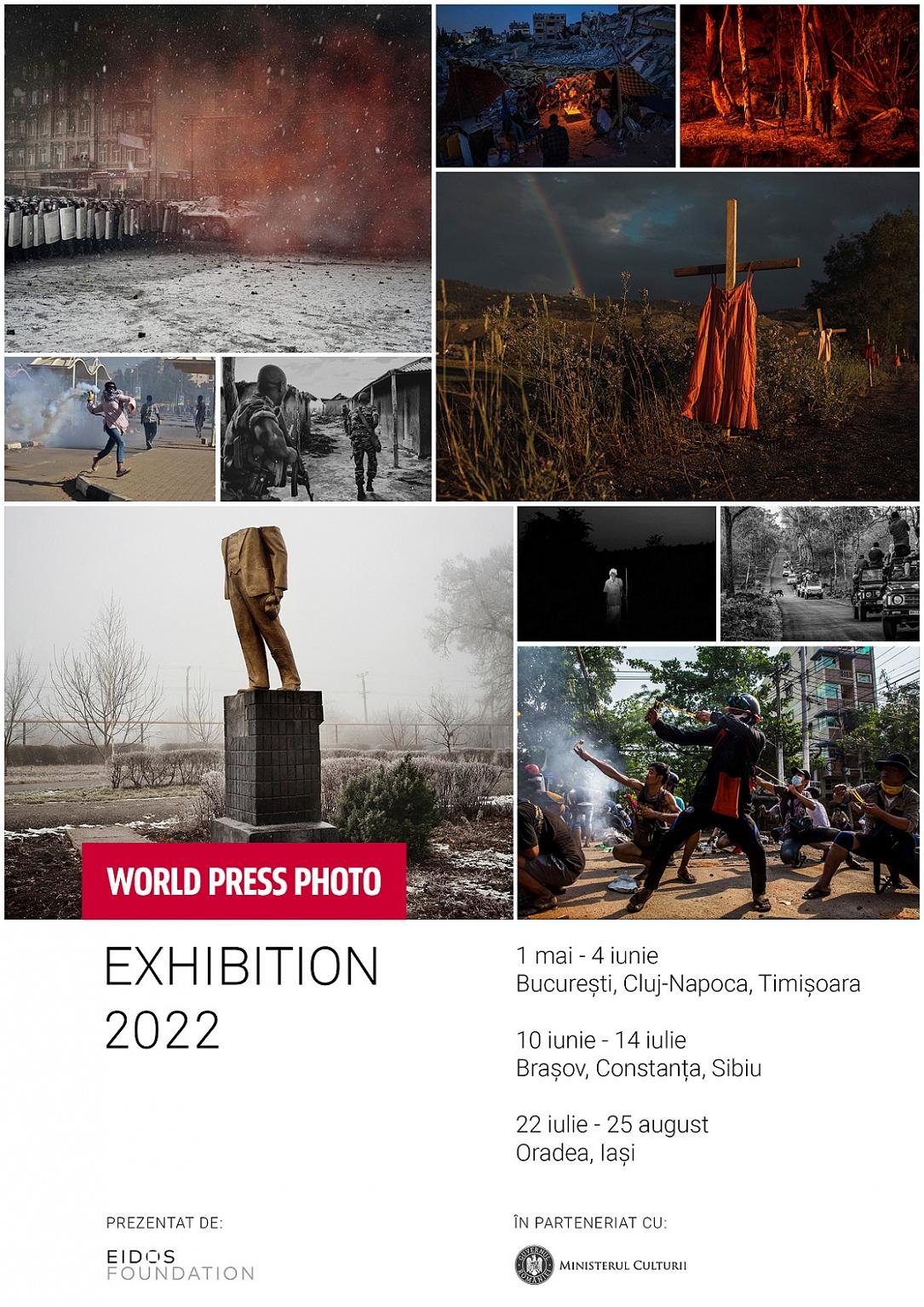World Press Photo: Photojournalism exhibition displayed in public squares in cities across Romania



The 65th edition of the annual international exhibition World Press Photo can be visited this year between May and August.
Unlike in previous years, when the exhibition was hosted by museums, this time it will be displayed in the squares of eight major cities in the country: Bucharest, Timișoara, Cluj, Brașov, Sibiu, Iași, Constanța, and Oradea.
For 35 days, the photos will be exhibited simultaneously between May 1st and June 4th in Bucharest, Cluj, and Timișoara, and then in the rest of the cities in the circuit. Details of each event will be posted on the Facebook page of the exhibition.
The 122 photos will have a free audio tour, made in a partnership with the application Smartify.
“The fight against fake news has never been tougher than now, and true journalism and reportage photography try to bring evidence of the truth to the viewer in the most unaltered possible way. It is extremely important to present these images and stories in places that are easily accessible and in easy-to-consume forms so that society can see, with its own eyes, events around the world. For this reason, this year we took the exhibition out of the museum and went directly to the public, in the hearts of the big cities and, hopefully, in the minds of as many people as possible,” Cristian Movilă, the founder of the Eidos Foundation and the representative of World Press Photo in Romania, said.
The World Press Photo Competition recognizes quality photojournalism and rewards images and stories from around the world. This year, out of 64,823 entries by 4,066 photographers from 130 countries worldwide, 24 regional and four global winners were selected.
The World Press Photo of the Year title went to Kamloops Residential School by Amber Bracken for The New York Times. For the first time in the World Press Photo’s 67-year history, the Photo of the Year is an image without people. Amber Bracken’s photograph commemorates the children who died at the Kamloops Indian Residential School, an institution created to assimilate Indigenous children, following the detection of as many as 215 unmarked graves in Kamloops, British Columbia.
The World Press Photo Story of the Year went to Saving Forests with Fire by Matthew Abbott for National Geographic/Panos Pictures.
The World Press Photo Long-Term Project Award went to Amazonian Dystopia by Lalo de Almeida for Folha de São Paulo/Panos Pictures.
The World Press Photo Open Format Award went to Blood is a Seed by Isadora Romero.
The World Press Photo exhibition is brought to Romania by Eidos Foundation in partnership with the Ministry of Culture.
(Photo courtesy of the event organizers)
simona@romania-insider.com